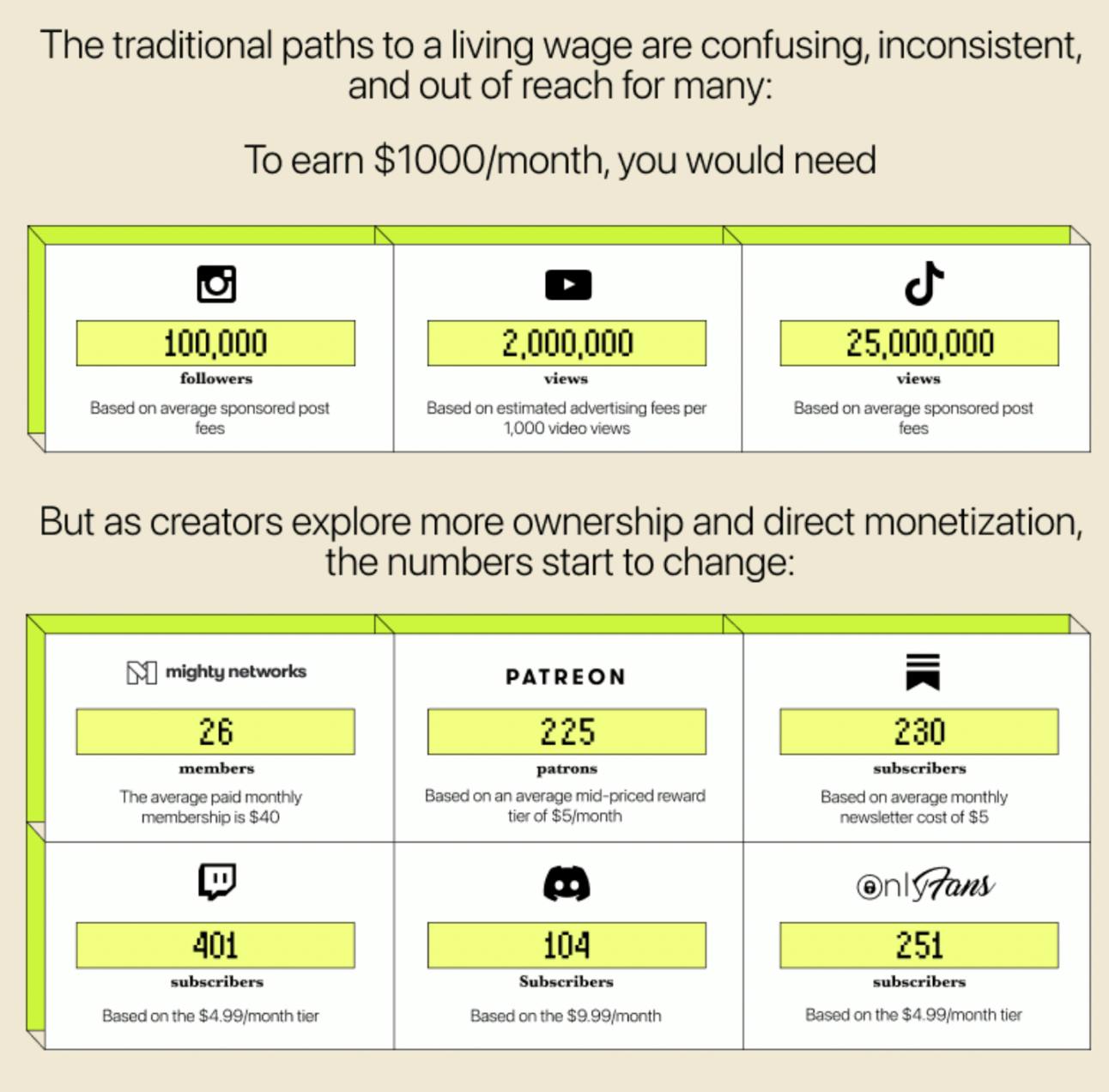
2024-7-8 22:43:19 Author: hackernoon.com(查看原文) 阅读量:5 收藏
I used to believe that software for creators was somewhat oversaturated — and upon doing more research, I found out that I was wrong.
The Evolution of the Creator Economy
First, let’s get the definition out of the way — the “Creator Economy” is not about dancing TikTokers or Instagram influencers partying on yachts.
In fact, the largest share of content creators are small businesses.

Thus, the “Creator Economy” refers to independent businesses and side-hustles launched by individuals who are looking to earn an income off of their knowledge and skills through digital mediums.
To give you an idea of how fast the sector has grown since 2011, take a look at how much creators have earned on Gumroad as of 2020 👇
This growth is being driven by:
- how we create and consume content
- access to new software and media platforms that empower creators
- new ways of making money from your work
Social Media and The Rise of Creators
Initially, social media enabled people to build large audiences and monetization came from brand deals or view count.
In this old web economy, earning a living from your work was only possible if you could reach millions. Therefore, it was all dependent on scale.
The Move towards Direct Monetization
Through social media, creators owned nothing, their content belonged to the platforms.
As a result, creators began splitting their efforts across multiple mediums (e.g.newsletters, courses, podcasts) to monetize their audiences directly, without being solely reliant on brand deals and ad revenue.
This is when things started shifting.
Creators as Owners
Through alternative ways to monetize their audience, creators began to realize if they owned the distribution, they could monetize much more differently.
In the old world (e.g. instagram, youtube, tiktok), the economics were different. You previously needed thousands, if not millions, of followers to earn $1,000/month.
Through direct monetization on new platforms (e.g. Twitch, Discord, OnlyFans, Patreon) you could achieve the same result with a much smaller audience.
More and more of these new platforms are offering new ways for creators to make money by going straight to the end-user and offering something of value in exchange for their money.
The Creator Economy Landscape
Technology has and will continue to play a huge role in this, as it has lowered the barriers to content creation.
Individuals are now free to choose which kind of work they take on (e.g. newsletters, livestreams, podcasts).
“Earning a living as a creator is an evolution of the so-called gig economy facilitated by companies like Uber and TaskRabbit.”
-Sam Yam, Co-Founder of Patreon
This has fueled demand, not only for content platforms, but also new services and tools that help creators manage their business.
The Opportunity for Startups in the Creator Economy
The shift towards diversified revenue streams and content ownership has resulted in the birth of a myriad of solutions and opportunities for creators, founders, and VCs.
Creators have access to new technologies and platforms through which they can engage their audiences and monetize their content.
Founders and VCs, recognizing the value of direct audience relationships, have focused on investing and developing tools to facilitate content creation, distribution, and monetization.
Some of the business models that VCs are
-
B2B Services: this includes analytics tools, tools for managing communities and fan relationships, and services that help creators with operations (e.g. legal, accounting, or financing)
-
Premium Fan Experiences: platforms that facilitate the creation of unique, high-touch experiences for superfans. These can include virtual meet-and-greets, personal shout-outs, exclusive content, and more.
-
Education and Courses: Creators with specific expertise in can develop and sell courses or offer coaching and consulting services.
One of the most overlooked characteristics of the creator economy is that creators are in fact media companies, and these companies require services, tech, and infrastructure to operate.
So, do I think startups should build more software for creators? Definitely, yes.
If you enjoyed this article, and you’d like to see more content like this, sign up for my newsletter
如有侵权请联系:admin#unsafe.sh



